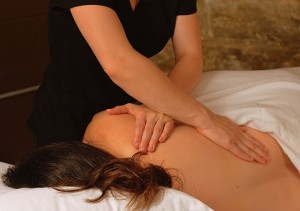 Congratulation, you’re a mom! Being a new mom means riding the emotional roller coaster or postpartum hormones, dealing with sleep deprivation, adjusting to your changing body, and recovering from childbirth and all while caring for your newborn.
Congratulation, you’re a mom! Being a new mom means riding the emotional roller coaster or postpartum hormones, dealing with sleep deprivation, adjusting to your changing body, and recovering from childbirth and all while caring for your newborn.
It will also change your posture, the way you breathe, your abdominal and pelvic floor muscle control and the elasticity of your ligaments. Often the body doesn’t just “fall back into place” after delivery and you may learn to adjust with patterns that can have adverse effects on your body.
Integration of maternal bodywork may add welcome value to your healing journey and transition to motherhood.
The goal is to prepare your body for postpartum recovery and health by addressing posture, muscular dysfunction and pelvic floor facilitation to resolve pelvic and/or low back pain with NMT. Postpartum bodywork is an effective and holistic approach for the many adjustments to motherhood.
How poor posture affect breastfeeding?
While you might think breastfeeding positioning is no big deal, the truth is if you find yourself constantly hunched (slouched) over you can strain your neck. This strain accumulates over time, leading to soreness and tightness over your neck and upper back. If your neck pain does not resolve within 3 months, it is best you seek help to assess and manage your pain.
How will birth have affected my pelvic floor?
Just being pregnant can weaken your pelvic floor, even if you don’t go on to have a vaginal birth. During labour and birth, your pelvic floor stretches to allow your baby’s head to pass out of your womb, and through your vagina. This may have left you with bruising, swelling, soreness and weak.
The nerves that connect to your pelvic floor muscles will have also stretched. This can make the area between your vagina and anus (perineum) feel numb or sore, which can make it more difficult for you to work your pelvic floor muscles.
Read more on how C-section scars can wreak havoc!
Your pelvic floor may have been overstretched during labour if you:
- pushed your baby out for a long time
- had a big baby
- had a severe tear
- had a forceps birth
Childbirth can cause persistent weakness in core function which results in symptoms of pain and tension that seem unrelated but can persist for years. Structural and biomechanical balancing can improve the strength and coordination of the pelvic floor muscles.
Abdominal re-education therapy sessions now available
I was in bad shape after giving birth to both of my children. I suffered from intensive neck and back pain from nursing with poor posture and my abdomen is very weak from two c-section births. Mara has helped me tremendously! I felt much better for weeks after her treatment and my abdomen muscles are strengthening each time I see Mara. I continue to get stronger and feel better with Mara’s help. She can help mom feel like herself after baby! Katie O’Connor, Chicago
The important role of your core and Tranverse Abdominas (TrA):
Working out with weak and unbalanced core muscles is linked to low back pain. Results in a loss of the appropriate lumbar curve and a swayback posture and weak muscles will have to compensate. A session will include an assessment of TrA muscles strength and treat compensating patterns that develop.
Active TrA and pelvic floor muscles helps you hold good posture while you are breastfeeding, carrying and lifting your baby. It will decrease the risk of back and hip pain and reduces possible post pregnancy incontinence.
Once the TrA muscles are active, you can progress to exercises for all the abdominal muscles and the core:
The benefits you gain
- Pain Relief
- treat carpal tunnel symptoms
- treat repetitive stress injuries
- Structural balance
- Biomechanical balance
- Hormone Regulation
- Decreased Swelling
- Better Sleep
- Improved Breastfeeding (bad posture during breast feeding)
- Relaxation and Stress Reduction
Before you start exercising
One of the big question is when can I start exercising? The American College of Obstetricians and Gynecologists say it’s okay to gradually resume exercising as soon as you feel up to it. But your doctor may want you to wait until your 6 week postpartum checkup to see how your doing first.
Warning: Traditional crunches and sit-ups actually do more harm than good by increasing the separation of the rectus bellies. The missing link to abdominal strength and core integrity during pregnancy, postpartum recovery (as well as everyday life for everyone), is to recruit the deepest of the abdominal muscles, the tranverse abdominis.
What about a musculoskeletal balance check up? You also want to consider before you start exercising to find and decrease dysfunctional movement patterns that may have developed during and even after pregnancy.
A smart choice to prepare your body and prevent injury. learn how an effective treatment plan applying integrative proven techniques is the smart choice for fast pain relief and long lasting results, schedule now.
[schedule_now]

